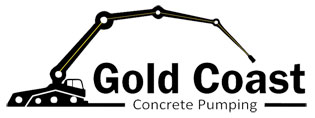
Top Benefits of a Concrete Line Pump in Construction
In the fast-paced world of construction, efficiency, precision, and cost-effectiveness are key factors that determine the success of a project. Among the many innovations that have revolutionised the industry, the concrete line pump stands out as one of the most valuable. Whether you’re working on a small residential project or a large-scale commercial development, a concrete line pump provides a reliable and efficient method for placing concrete exactly where it is needed.
In this blog, we’ll explore the top benefits of using a concrete line pump in construction, and why it has become a preferred choice for contractors and builders across the industry.
- Precision Placement of Concrete
One of the standout advantages of a concrete line pump is its ability to deliver concrete precisely to the required location. Unlike traditional methods, such as wheelbarrows or cranes, a line pump can transport concrete through a series of hoses directly into hard-to-reach areas.
This is particularly useful for projects with complex designs, multi-storey structures, or tight spaces where large machinery cannot easily operate. By reducing the need for manual handling, a line pump ensures consistent placement, saving both time and effort.
- Improved Efficiency and Speed
Construction schedules are often tight, and delays can be costly. A concrete line pump significantly speeds up the pouring process compared to manual methods. Once set up, it can continuously deliver large volumes of concrete quickly and efficiently.
For residential projects such as driveways, patios, or foundations, a line pump reduces labour-intensive work. On larger commercial or infrastructure projects, it enables teams to complete concrete placement on schedule, ensuring smoother workflows and faster project completion.
- Access to Difficult Areas
Not all construction sites are easy to work with. Some may have obstacles such as existing structures, uneven ground, or restricted entry points. A major benefit of concrete line pumps is their ability to transport concrete across long distances or to elevated positions with ease.
Whether you need concrete on the upper floors of a high-rise building, in the backyard of a property with narrow access, or around obstacles like fences and trees, a line pump offers unmatched versatility. Its flexible hoses can be extended and manoeuvred to reach areas where other equipment cannot.
- Reduced Labour Costs
Traditional concrete pouring methods require significant manpower to transport, pour, and spread concrete. This not only increases labour costs but also slows down the pace of work. A concrete line pump minimises the need for manual handling, as the machine does most of the heavy lifting.
With fewer workers required for the pouring process, contractors can cut down on labour expenses while improving efficiency. This makes line pumps a cost-effective choice, especially for large-scale projects that demand extensive concrete placement.
- Consistent Quality and Reduced Waste
Quality is a top priority in any construction project. A line pump ensures a steady and continuous flow of concrete, which helps maintain uniform consistency throughout the pour. This reduces the risk of weak spots, air pockets, or uneven surfaces that could compromise the structural integrity of the build.
Additionally, since the concrete is delivered directly to the placement area, there is minimal spillage or wastage. This not only saves materials but also keeps the site cleaner and more organised.
- Enhanced Safety on Site
Construction sites can be hazardous, particularly when heavy materials like concrete are manually handled or transported with wheelbarrows and buckets. Using a concrete line pump reduces the physical strain on workers and lowers the risk of accidents caused by spills or trips.
By minimising manual labour and streamlining concrete delivery, line pumps contribute to a safer, more efficient working environment. Safety is improved not only for workers but also for other trades operating on the same site.
- Cost-Effectiveness in the Long Run
While hiring a concrete line pump involves an upfront cost, the long-term benefits far outweigh the expense. By reducing labour costs, speeding up project timelines, minimising waste, and ensuring consistent quality, line pumps help save money overall.
For contractors managing multiple projects, the ability to deliver concrete more efficiently translates into higher productivity, improved client satisfaction, and better profit margins.
- Versatility for Different Projects
Another major advantage of concrete line pumps is their versatility. They can be used for a wide range of construction projects, including:
- Residential foundations and slabs
- Driveways, patios, and pool surrounds
- High-rise buildings and commercial complexes
- Bridges, tunnels, and large infrastructure works
- Industrial floors and warehouses
No matter the size or complexity of the project, a line pump can adapt to different site conditions and requirements.
Conclusion
The concrete line pump has become a game-changer in the construction industry, offering a blend of precision, efficiency, safety, and cost savings. From small-scale residential jobs to massive infrastructure projects, it provides a reliable solution for delivering concrete exactly where it’s needed.
By choosing a concrete line pump, contractors can ensure faster project completion, improved quality, reduced labour costs, and enhanced safety—all of which contribute to the overall success of the build.
